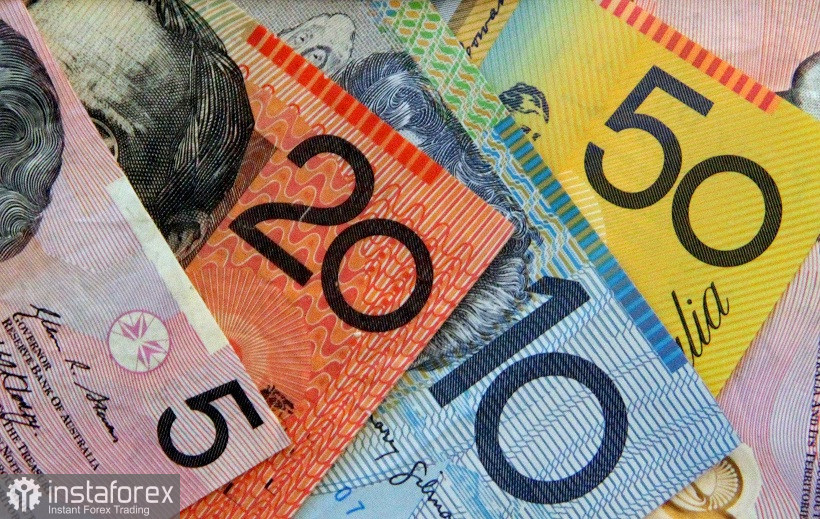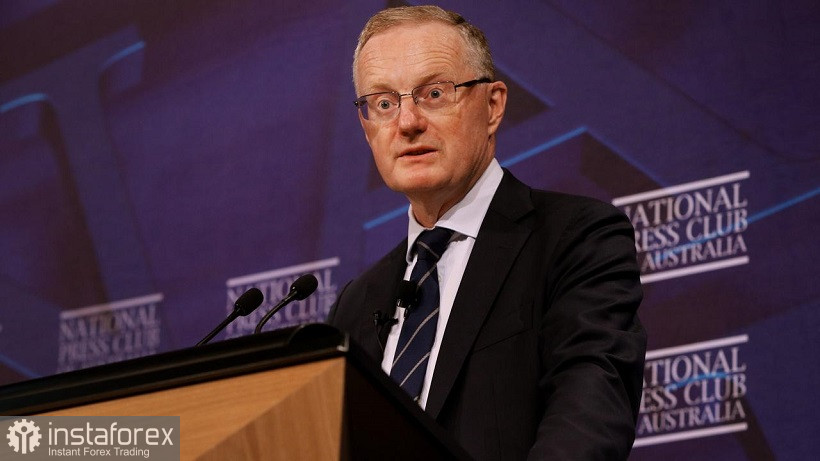The Australian dollar, paired with the US currency, plunged again. The AUD/USD pair has renewed its two-month price low, steadily moving towards the bottom of the 67th figure. The results of the Reserve Bank of Australia's September meeting, in general, did not disappoint, but did not support the aussie either. The RBA implemented the most anticipated scenario by raising interest rates by 50 basis points. However, at the same time, the central bank retained the intrigue regarding the further pace of tightening monetary policy. This circumstance was interpreted against the Australian currency: after a sharp surge to the level of 0.6835, the pair turned 180 degrees and plunged, consolidating in the area of the 67th figure.

Of course, the US dollar is the locomotive of the downward movement. The Australian in this pair plays on the sidelines, allowing itself only short-term corrective counterattacks. AUD/USD traders were initially ready for two scenarios after the announcement of the results of the RBA meeting: either the aussie immediately plunges, or after a corrective rollback. As a result, the second option was implemented, however, in a non-standard version. Bulls on the pair were active during the Asian session on Tuesday, pulling the price to around 0.6835. But literally three hours before the announcement of the results of the September meeting, the pair rolled downwards. The RBA failed to stop the downward trend, allowing the AUD/USD bears to take control of the pair.
It is noteworthy that the aussie came under pressure, despite the fact that the RBA played a virtually hawkish scenario today. In particular, the central bank raised the rate by 50 points, although ahead of the September meeting, some experts allowed a 40-point hike. In addition, the central bank assured the markets that it will maintain a hawkish rate and will continue to raise rates.
At first glance, all factors are in favor of the aussie. But, as they say, "the devil is in the details." For example, from the text of the accompanying statement, one can conclude that the rate has approached the neutral level (the phrase about the "normalization" of monetary policy). This fact allows the RBA to be flexible regarding the pace of the rate increase. Actually, RBA Governor Philip Lowe stated this in plain text. According to him, the size and timing of further hikes "will be determined by incoming data and the outlook for inflation and the labor market." At the same time, he separately emphasized that the central bank does not adhere to a pre-planned plan: "The central bank does not set a clear trajectory, all decisions will be made from meeting to meeting."
It should be noted that the results of the meeting should be considered as a whole, taking into account the rhetoric of the RBA, voiced in August and July. For example, the phrase about the termination of emergency monetary support was excluded from the text of the August accompanying statement. This wording was present in the text of previous meetings. Secondly, according to the conclusions of the previous meeting, the RBA no longer aims to return to the target inflation range within the next year. This time target has been replaced with a vague notion of "for some time". Thirdly, the central bank mentioned the need to keep the country's economy "in a stable state." This phrase was included in the text of the accompanying statement instead of the above two.

The rhetoric of the September meeting was sustained in the spirit of the August one. Therefore, traders made the obvious conclusion that the central bank will be inclined to implement a more moderate pace of rate hikes in the future (while maintaining the "option" to increase rates if necessary). I note that on the eve of the September meeting, the majority of economists polled by Reuters predicted a slowdown in the pace of tightening of the monetary policy of the RBA at subsequent meetings. In their opinion, the RBA will return to raise the rate by 25 basis points at its meetings in October and November. Given the overall results of the September meeting, we can assume that the above analysts are unlikely to revise their forecasts. This means that the aussie will be under background pressure.
On the side of the dollar are the Federal Reserve's hawkish intentions and US energy independence. In addition, the greenback is in high demand as a defensive tool, benefiting from increased anti-risk sentiment in the markets. The latest report on the growth of the index of business activity in the services sector from ISM only added to the fundamental picture positive for the greenback. The indicator came out in the green zone, reaching 56.9 points. After a multi-month decline, the index shows growth for the second consecutive month. The latest result is the best since April this year.
Thus, the existing fundamental background contributes to further price decline. The main target is 0.6705, which corresponds to the lower line of the Bollinger Bands indicator on the D1 timeframe.
 English
English 
 Русский
Русский Bahasa Indonesia
Bahasa Indonesia Bahasa Malay
Bahasa Malay ไทย
ไทย Español
Español Deutsch
Deutsch Български
Български Français
Français Tiếng Việt
Tiếng Việt 中文
中文 বাংলা
বাংলা हिन्दी
हिन्दी Čeština
Čeština Українська
Українська Română
Română

